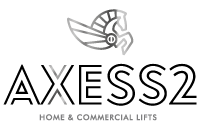Over the last two decades, we have seen landmark advancements in the ways in which people with disabilities are incorporated into the public realm, with it now a legal obligation for all public spaces and businesses offering services or products to the public to ensure they have adequate provision for disabled access onto their premises.
This has obviously been a welcome move, which the majority of businesses immediately complied with. However, providing disabled access to your business premises can be a more complicated process than it initially seems, and there are strict health and safety and building regulation guidelines which must be adhered to. Here is a guide to the basic principles you must be aware of if you are opening a business to the public.
Disability Discrimination Act
As a business, it is your obligation to ensure that you comply with all principles of the Disability Discrimination Act (DDA), which is a piece of legislation created in 1995, and updated in 2005, to protect the rights of disabled people, and reduce discrimination against them. This legislation has made it a requirement since October 2004 for all service providers in the UK to make any required changes to ensure disabled people can use their facilities. This includes the provision for people with movement issues, wheelchair users, those with hearing and visual impairment, and those suffering from mental illness.
The same law protects disabled people from being discriminated against when applying for a job, and within the workplace.
If you are a business owner in which customers visit your premises, you must ensure that your building is accessible to those with mobility issues or other disabilities. Amendments you may be required to make include building ramps or wheelchair lifts to avoid any steps, widening doorways, and providing Braille signs or menus.
If you are found not to comply with these regulations, for example you do not provide negotiable access for wheelchair users; you will be breaking the law, and could face legal action.
Building Regulations
If building, extending or moving to a new business premises, and you are applying for planning permission for the works or a change of use, one of the legislations you must comply with is Building Regulations part M, which governs access to and use of buildings.
This legislation sets out very strict access factors, aimed at ensuring those with mobility related disabilities have safe and easy access to all business and service premises. As a business, to gain planning permission, you must ensure that any slopes fall between a minimum and maximum gradient, that clearly signposted alternatives to steps, such as disabled lifts or ramps are available, both for access into the public entrance, and within the interior; and that all hazards on access routes are eliminated.
There are also several more small yet important regulations, but the biggest change you will have to ensure is made if you do not already comply, is that there is an alternative to any stairs, accessible by wheelchair, even if it is a singular step. Wheelchair lifts are generally the most efficient, space saving and user convenient way to do this.
Here at Axess 2, we are dedicated to ensuring that disability discrimination continues to fall in the UK, and are proud to offer high quality products and advice which can help to make this the case. We provide wheelchair lifts to a wide range of businesses and organisations, to fit varying building and spatial specifications, and can help you to find a disabled access solution which fully complies with all legislation, whilst still being convenient to the space you have.

